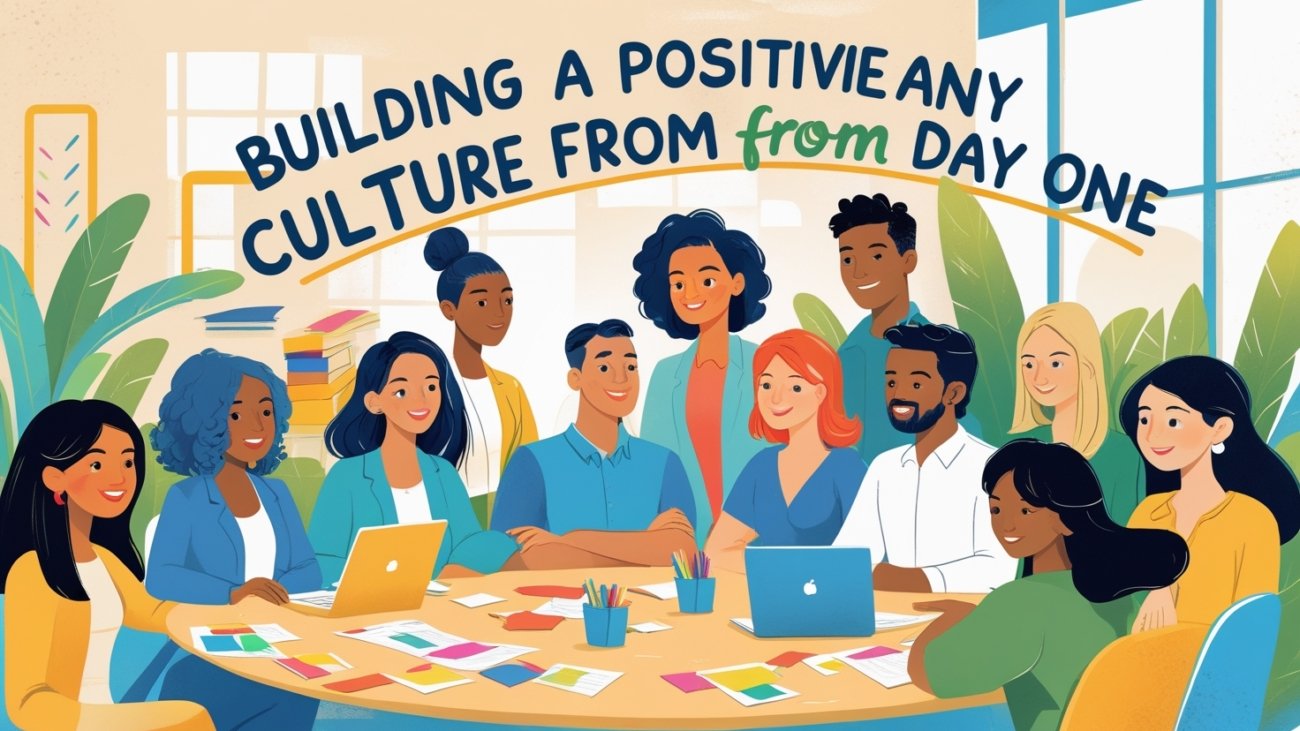
A positive company culture is the heartbeat of any thriving organization, driving employee engagement, retention, and productivity.
With 88% of employees citing culture as a key factor in job satisfaction (2024 Deloitte study), building a strong foundation from the start is critical.
Step 1: Define Core Values with Clarity
A positive culture begins with clear, authentic values that reflect your organization’s mission.
Involve your founding team in a brainstorming session to identify 3–5 core values (e.g., collaboration, innovation, empathy).
Use a tool like Mural to create a “Values Wheel” where each value is linked to specific behaviors, such as “empathy means active listening in meetings.”
Test your values’ resonance by sharing them on X with #CompanyCulture and asking, “Which of these values would inspire you to join a team?”
Analyze responses to refine your choices.
Ensure values are actionable — Zappos’ “Deliver WOW” value, for instance, translates into measurable customer service goals.
Interactive Task:
Draft a one-sentence mission statement tying your values to your vision, then post it on a platform like LinkedIn for feedback from your network.
Key Insight:
Clear, behavior-driven values set the tone for a cohesive culture.
Step 2: Embed Culture in Hiring
Hire for cultural fit without sacrificing diversity.
Craft job descriptions that reflect your values, using inclusive language analyzed by tools like Textio to boost applications by 20%.
During interviews, ask behavioral questions like, “Tell me about a time you went beyond your role to help a teammate,” to assess alignment with values like collaboration.
Create a “Culture Interview Guide” with a scoring rubric for candidates’ cultural fit.
Role-play interviews with a colleague to practice evaluating responses.
Share your guide’s key questions on X with #HRTips to crowdsource improvements from HR professionals.
Interactive Task:
Design a sample job ad for a role (e.g., project manager) that weaves in your values, and test its ATS compatibility using Jobscan.
Key Insight:
Hiring with culture in mind builds a team aligned with your vision from the outset.
Step 3: Foster Connection Through Onboarding
Onboarding is your first chance to immerse employees in your culture.
Create a 30-day onboarding plan that includes team introductions, value-focused workshops, and mentorship pairings.
For example, a “Culture Kickoff” session could involve a storytelling exercise where employees share personal experiences tied to your values.
Make it interactive with a digital “Culture Passport” using Google Forms, where new hires complete tasks like meeting a colleague from another department or contributing an idea to a team project.
Reward completion with a small token, like branded swag.
Share your onboarding plan on X with #OnboardingIdeas for peer input.
Interactive Task:
Create a sample Culture Passport task list and ask a friend to test it, then refine based on their feedback.
Key Insight:
Engaging onboarding embeds culture early, fostering belonging.
Step 4: Encourage Open Communication
A positive culture thrives on transparency.
Establish open communication channels like weekly team huddles or anonymous feedback tools (e.g., SurveyMonkey).
Train leaders to model active listening and vulnerability — sharing a professional challenge they’ve faced can build trust.
Host a “Culture Jam” event where employees brainstorm ways to improve collaboration, using a virtual whiteboard like Miro to capture ideas.
Post a summary of top ideas on X with #WorkplaceCulture to spark discussion and gain external perspectives.
Interactive Task:
Write a 280-character X post pitching a creative communication initiative (e.g., a “no-meeting” day) and track engagement to gauge interest.
Key Insight:
Open communication builds trust and empowers employees to shape culture.
Step 5: Celebrate and Reinforce Positivity
Recognition fuels positivity.
Implement a peer-to-peer recognition program using tools like Bonusly, where employees award points for value-driven actions, redeemable for rewards.
For example, a team member embodying “innovation” might be recognized for a creative solution.
Organize monthly “Value Spotlight” events, showcasing stories of employees living your values.
Make it interactive by hosting a live poll during the event (via Slido) asking, “Which value inspires you most today?”
Interactive Task:
Design a recognition program outline and share it on an HR forum like HR.com for feedback.
Key Insight:
Regular, authentic recognition reinforces cultural values.
Step 6: Measure and Evolve Culture
Track your culture’s health with pulse surveys (e.g., via CultureAmp) asking questions like, “Do you feel our values guide daily work?”
Analyze data to identify gaps — low scores on “inclusion” might prompt diversity training.
Conduct quarterly culture reviews to adapt to team growth or external trends like hybrid work.
Create a “Culture Dashboard” in Google Sheets to visualize metrics like engagement scores or turnover rates.
Share a anonymized version on X with #HRAnalytics to learn from other organizations’ approaches.
Interactive Task:
Attend a free webinar on culture metrics (e.g., via SHRM) and post a key takeaway on X with #CultureMetrics.
Key Insight:
Data-driven insights ensure your culture evolves with your organization.
Build a Culture That Lasts
A positive company culture, built from day one, creates a workplace where employees thrive and businesses succeed.
By defining values, hiring intentionally, and fostering connection, you lay a foundation for long-term impact.


Следующая страница Программирование
этот контент Конструкторы игр
здесь Разработка 3D игр